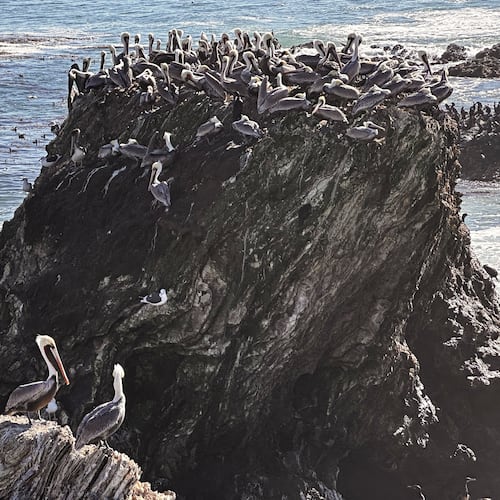This is the time of year for hoarding, when squirrels, chipmunks and some bird species are busily storing seeds, nuts, acorns — even insects — for retrieval when food becomes scarce in deep winter.
Carolina chickadees, titmice, nuthatches, red-headed woodpeckers, blue jays and crows are among the few Georgia birds that store, or “cache,” food for winter.
Whether bird or mammal, the hoarders may store incredible amounts of food each autumn. In a half hour, a single gray squirrel may bury as many as 25 nuts — and 10,000 during the entire year — to eat during winter. Some studies show that just one chickadee may store up to 1,000 seeds — especially sunflower seeds — a day, or 80,000 a season.
The hoarders have different storage techniques. Chipmunks may deposit as much as eight pounds of nuts and seeds in their underground dens — a behavior known as “larder hoarding.” Squirrels, on the other hand, are “scatter hoarders” because they bury nuts in hundreds of separate holes an inch or more deep in the ground. Blue jays may bury nuts and acorns as far as a mile away from where they found the foods.
Chickadees, titmice and nuthatches store seeds in bark crevices, tree crotches, knotholes and gutters or under shingles and other places.
Red-headed woodpeckers, Georgia’s only woodpecker species that stores food, hide seeds in cracks in wood, under bark, in fenceposts and other places — and cover the caches with wood or bark. Amazingly, red-heads also regularly store grasshoppers alive, wedging the insects into crevices so tightly that they can’t escape.
Most of the hoarders have keen memories and other methods, such as spatial and visual cues, to find their hidden caches — at least most of the time. It is beneficial, however, that squirrels and blue jays sometimes forget where they bury food: A buried acorn that is forgotten, for instance, may sprout and become a beautiful oak tree.
IN THE SKY: From David Dundee, Tellus Science Museum astronomer: The Southern Taurid meteor shower will peak at about 15 meteors per hour on Monday night — in the east after dark until dawn. The moon is in its new phase and will “grow” into first quarter next week. Mercury and Venus are low in the west at dusk. Mars rises in the east at about midnight. Jupiter rises in the east just after dark. At the same time, Saturn is in the south.
Charles Seabrook can be reached at charles.seabrook@yahoo.com.
About the Author
Keep Reading
The Latest
Featured

